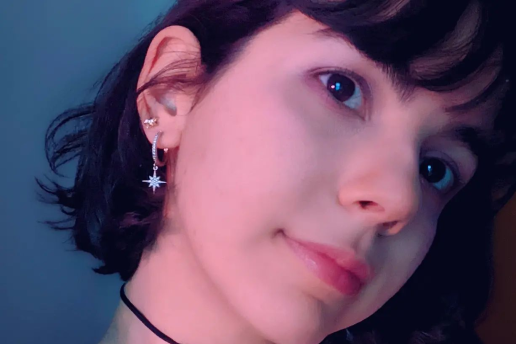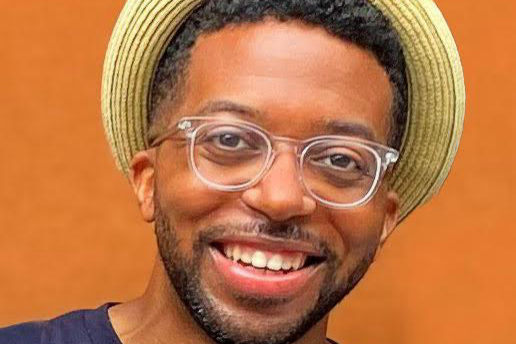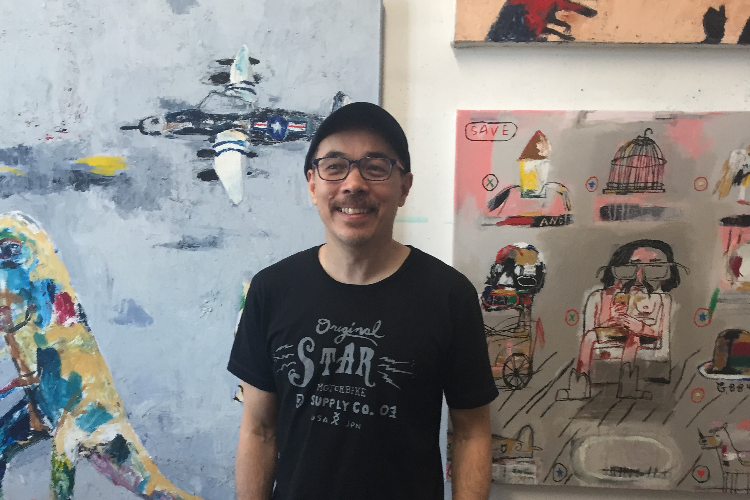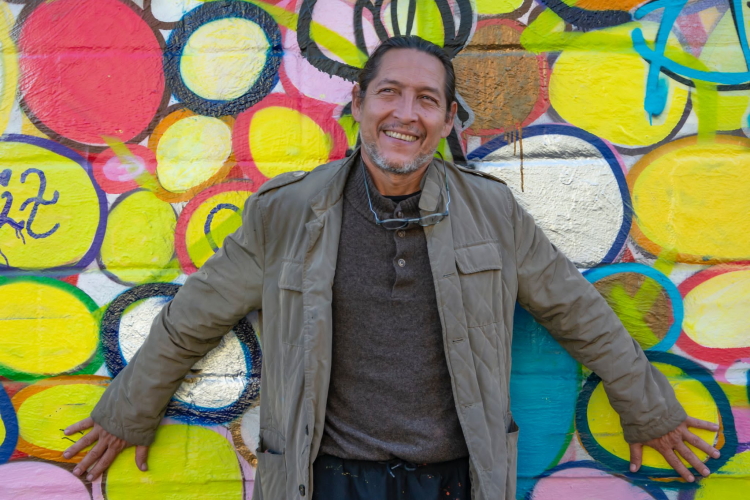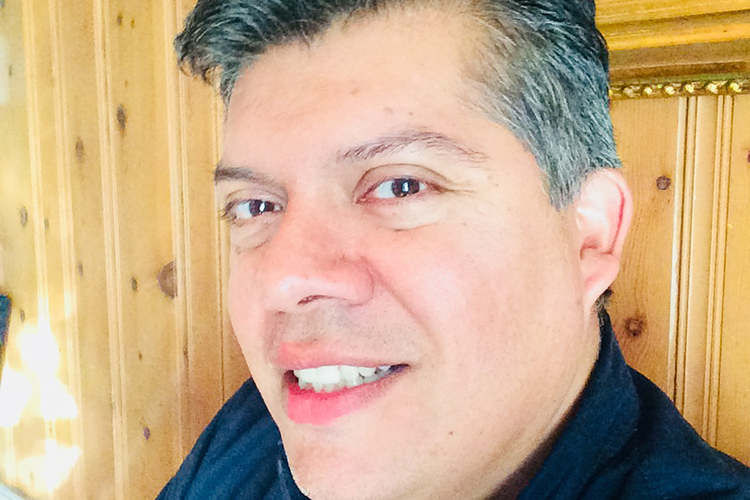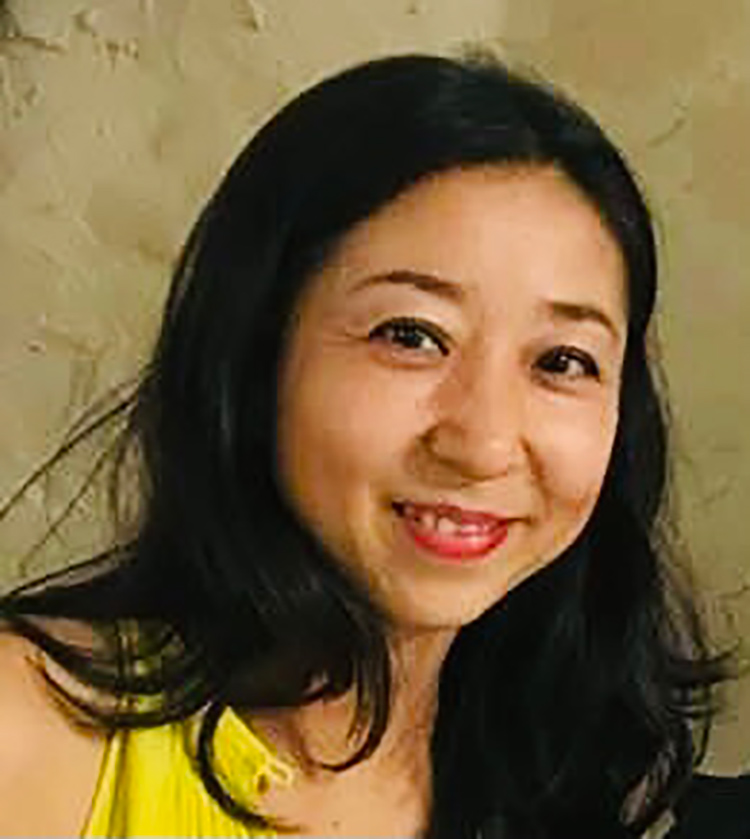
エヴァ・ペトリッチ
エヴァ・ペトリッチは、1983年にスロベニアで生まれ、現在はニューヨーク、ウィーン、そしてスロベニアのリュブリャナの3都市を活動の拠点にしている。作品形態は、写真、ビデオ、サウンド、インスタレーション、パフォーマンス、著述と多岐にわたる。
国連国際学校(ユニス)を優秀な成績で2002年に卒業、2005年までウィーンのウェブスター大学で心理学とビジュアルアートを学び、その後2010年にオーストリアのダニューブ大学クレムスのトランスアート・インスティチュート(ニューヨークとベルリンのプログラム)でニューメディアを修了。
まだ30代にも関わらず、既に60回の個展と70回のグループ展参加を果たし、その開催地は20カ国にもわたる。
作品「コレクティブ・ハート」は2016年にウィーンのセント・スティーブン大聖堂と2019年にニューヨークのセント・ジョン・ザ・ディヴァイン大聖堂でインスタレーションされている。スロベニアのルブリャナ市長が新婚夫婦のために贈ったガラス作品「ウルスカ」を制作、美しい会社の特徴を表した香水を入れるガラス瓶「ステクラーナ・フラストニク」をエコーのために制作し、スロベニア大統領の企画でポストニーナ洞窟の発見から200年を記念したホワイト・ホールにインスタレーションを実現した。また、ニューヨークの最高級デパートのバードルフ・グッドマンのウィンドー装飾を2013年と2015年に担当し、2018年には国連の代表者入口では個展を開催している。
作品は、ルブリャナの国際グラフィックアートセンター、ブエノスアイレスのボルヘス・カルチャーセンター、クラーゲンフルトの近代美術館、ウィーンのアルベルティーナ美術館とオーストリア応用美術博物館、コスタニエビカのボジダル・ジャカク美術館、オハイオのバトラーインスティチュート・オブ・アメリカンアート、ギリシャのグーランドリス・コレクションなど、スロベニア、オーストリア、アルゼンチン、ギリシャ、アメリカの機関に収蔵されている。
Eva Petric
Eva Petric was born in 1983, at Kranj, Slovenia, and currently lives and works in New York, Vienna in Austria, and Ljubljana in Slovenia. The forms of her works are photography, video, sound, installation, performance and writing.
She graduated from United Nations International School, receiving an academic distinction and special art award in 2002. She received a BA in psychology and visual art from Webster University in Vienna in 2005, and an MFA in new media at Transart Institute in New York/ Berlin, Danube University Krems, Austria.
Petric, in her thirties, has already held over 60 solo and over 70 group exhibitions in 20 countries; Argentina, Austria, Canada, China, Croatia, Denmark, Egypt, Germany, Greece, Hungary, Italy, Mexico, North Macedonia, Philippines, Poland, Slovenia, Spain, Serbia, Turkey and the US.
Her work “Collective Heart” was installed at the sanctuaries of St. Stephen’s Cathedral in Vienna in 2016 and The Cathedral Church of St. John the Divine in New York in 2019. She was commissioned by the Mayor of Ljubljana in Slovenia for “Urska” – glass object as a gift presented by the Mayor to newlyweds, by Steklarna Hrastnik for Echo, a glass object containing ambient fragrance representing the virtues of this company, as well as for her site specific installation White wHole in the remarkable setting of the underground caves to celebrate the 200 year anniversary of the discovery of the Postonjna Caves inaugurated by the President of Slovenia.
She was also commissioned two times for art installations shown in the windows for Bergdorf Goodman in New York in 2013 and 2015. Her solo show One World, A World for All was held at the Delegates Entrance of the United Nations, NY in 2018.
Her works are in the collections of institutions in Slovenia, Austria, Argentina, Greece and the US including the International Centre for Graphic Art, Ljubljana, Slovenia; Centro Cultural Borges, Buenos Aires, Argentina; Museum Moderner Kunst Kaernten, Klagenfurt, Austria; Albertina Museum Vienna; MAK Museum for Applied Art, Vienna, Austria; Bozidar Jakac Regional Museum, Kostanjevica, Slovenia; Butler institute of American Art, Youngstown, Ohio, USA; The Goulandris Art Collection, Greece.
She participated in one of the oldest art salons in Europe, the Societe Nationale des Beaux-Arts located in Paris in 2016, where her work Ophelia no 2 won the Silver Medal in photography. At the 6th international fine arts festival Kranj, her lace installation TRANShomoPLANTATION received the 2017 Grand Prix of the festival.

5番街にある超高級デパートのバードルフ・グッドマンのウィンドーを制作。2015年。
Installation for Bergdorf Goodman department store on 5th Avenue, New York. 2015
Kyoko Sato: How was it possible to achieve such an extensive amount of work completing 60 solo and 70 group exhibitions worldwide so far, even though you are still only in your 30s?
佐藤恭子:まだ30代の若さで既に世界で個展を60回も開催し、グループ展に70回も参加していて精力的に活動をしていますが、なぜそんなことが出来たのでしょうか。
Eva Petric: For me, every waking minute is an unforgettable, and unique minute full of potential, full of life. But even though it is, more or less most often, lots of minutes that compose our lives, these minutes are minute and swiftly fading and completely unique. I perceive our time here on Earth as a very special and unique experience that should be lived as fully as possible and at the same time also reflected upon as fully as possible, in order to be aware and not take for granted what life offers us. Being most comfortable in the role of an artist, it is perhaps than no surprise that I have outbursts of ideas and the need to present them as exhibitions to then be able to also reflect upon them. I feel that life passes very quickly and if we feel the strong urge, felt as a wish through the emotion of yearning, that then we should pursue this feeling and materialize it through specific action. Perhaps this is why so many shows have added up in my CV, because I have many ideas and am inspired to work with the unique environment in which I am. Living in three places and having grown up in different continues and moving countries every two years has only helped in my wish to express my observations through art and more work and as well the wish to present them in the various and also authentic spaces, to learn how different contexts and spaces require different ways of placement of art. This is learned best through making exhibitions in the various different spaces, resulting also in my many exhibits, I suppose. Last but not least, perhaps it is my early training of classical ballet that continued through high school that helped to shape my need to bring into action my ideas and also to apply a type of discipline to make the ideas materialize. But in all honestly, I find myself looking around at other people in all various spheres of life and asking myself in awe, “ how did they possibly manage to achieve all this?”; so I do not feel at all like one of them!
エヴァ・ペトリッチ:私にとって、寝ている時以外の時間は、すべて貴重で可能性に満ちているのです。時間はすぐに過ぎていってしまいますが、そのすべてがユニークな時間で私たちの人生を構成しているのです。 アーティストであり続けることができるのは、私にはアイデアが溢れるようにあって、それを展示や作品として反映する必要があるからに違いありません。人生はあっという間に過ぎてしまうので、心から強い希望があるならそれに従って、特別な行動に置き換えなければならないと感じています。これが恐らく理由で、私にはたくさんのアイデアとたくさんの自分を通じたインスピレーションがあるので、多くの経験を積むことが出来ているのでしょう。3都市を拠点として活動し、今も2年ごとに移転を繰り返して多くの国で育ったので、アートを通じて様々に観察したことを表現し、作品を様々な場所に展示したいという思いが育ち、実際に多くの場所や文脈で活動する方法を学ぶことになりました。様々なスペースで展覧会をしたという経験も私に展覧会経験が多くなった理由の一つだと思います。子供の頃から高校までクラシックバレエを続けたことも、自分の考えを行動に移したり、作品にしたりする規律に役立っています。しかし正直なところ、他の分野で周りの人たちが「これをすべて成し遂げたなんて本当にすごい」と思うことに感心することがあって自分がその一人だと感じることはありません。
Kyoko: When you were in your 20s in 2010, what were you expressing through this “One-way street” at the time?
恭子:2010年制作の「一方通行」シリーズは、あなたがまだ20代の若い時ものですが、何を表現しているのでしょう。
Eva: “One-Way Street” was both a study of trying to combine different techniques of photography as well as representations of the human body, through both its shadow form as well as concrete body flesh form. By combining analog black and white and in the dark room developed photographs of my shadows with their so called opposite color digital staged images I created so called “visual aphorisms” which are the visual representation of what we say to usually be: ”stated between the lines”. By using my shadow and overlaying it onto of my color staged photographs I wanted to give my image more depth, both visually as well as in meaning. In visual terms, the shadow always creates depth, and brings about also a highlighted emotional level. The intention behind my “One-Way-Street” series was to give back the colorful staged images of body, their emotions, by concealing them with their darker shadow counterpart and in this way enable for viewers to remain longer with them, allowing for the emotions in them to begin to take place.
エヴァ:このシリーズは、影と実際の肉体を通じて人間の体を表現し、様々な写真技術を組み合わせています。アナログの白黒を組合せ、逆のデジタルカラーで私の影の写真をダークルーームで現像します。これは「ビジュアル・アフォリズム」と呼び、「行間に位置付ける」とも言えるビジュアル表現なのです。自分の影を自作のカラー写真の上に重ねることで、視覚的にも深みのあるイメージを作りたかったのです。ビジュアル的には影は深みを与え、感情的なタッチを与えます。この「ワン・ウェイ・ストリート」シリーズの狙いは、肉体にカラーイメージを与えて逆のダークな影をつけて感情を起こさせて、鑑賞者が長く楽しむことができることです。
Kyoko: It looks you were doing a performance for the photography work. Why did you use yourself as a motif for the work?
恭子:作品のためにパフォーマンスをしているように見えます。作品のために自分自身をモチーフにしたのはなぜですか。
Eva: For me the body, my body is the vehicle of perceiving this life and that I am alive in the first place as well as the medium for expression of my inner thoughts and feelings. For me it is my tool and medium of expression, and I feel that if I feel and express through my body, both inner and outer body, that I am then able to sustain a level of the genuine and authenticity which I feel is essential to art. This has also been my way since I can remember, as I attended ballet classes from the early age of three. Further, my body is for me a constant that has been with me, always, in all – ways faithful to me regardless of all the changing environments and circumstances when I was, as a young girl changing environments all the time, living in places like Ethiopia, India and then the USA and Argentina and Europe.
エヴァ:私にとって自分の体はこの人生を知覚するための乗り物です。何より生きているということが第一で私の心の中と感情を表現する媒体でもあります。肉体は道具であり、表現のための媒体で、内と外との双方の肉体を通して表現することは、アートに必要な純粋で確実なものを保つことができるのです。また私は3歳からバレエを習っているので自然なことでもあります。体はいつも私のもので、環境や状況に関わらず私に忠実なのです。小さい頃はエチオピア、インド、アメリカ、アルゼンチン、ヨーロッパと引っ越して周りの環境がいつも変わっていました。
Kyoko: Who was the photographer? Where did you shoot them?
恭子:写真を撮った人は誰ですか。撮影場所は?
Eva: In my work my moto has always been, a one woman show! So it is me who poses in front of the camera, but also me who makes the photos click in the camera, and also the one who then develops them further in the dark room, if needed. Most of the images were taken in lower Austria country side or at famous points in Vienna such as the stone water fountains of the Hofburg palace (I wanted to choose some cliché like places and transform and look at them from a different angle through my photographs) while the shadows, (black and white analog images) were taking in my apartment in Vienna, on the various walls within it during the span of an entire year of photographing every single morning the ever changing sunlight.
エヴァ:私の作品制作のモットーは、私一人であることです。カメラの前でポーズを取っているのも、カメラで撮影をするのも、ダークルームで現像をするのも、私です。撮影場所のほとんどはオーストリアの田舎かホーフブルク宮殿の噴水といったウィーンの名所です。(お決まりの場所を選んで、私の写真を使って別のアングルから見せることが好きです。)白黒アナログの影は、ウィーンの私のアパートで撮影をしました。毎日刻々と変わる太陽光線のもと写真を毎朝1年間にわたって色々な壁を使って撮りました。
Kyoko: Why did you choose acrylic glass instead of paper?
恭子: 紙ではなくアクリルを使ったのはどうしてですか?
Eva: I feel that it is important to choose wisely when choosing the material which best represents the theme of the work one attempts to present. For me, acrylic glass, or plexi glass is fascinating, because it is closest in appearance to glass itself which fascinates me with its countless reflections. Glass fascinates me, mostly because of its fragility, but also because of the reflections it produces. Every time we look through a window we are interacting with glass, but also with our own inner selves staring back at us. What we see, how we see, depends on how we are feeling inside, underneath our visible skin. So glass is a kind of mediator between our inside private world and our outside public space. I work with this concept a lot in my photography, video, poetry, and installation.
エヴァ: 作品を発表する際にテーマを効果的に示すのに最適な素材を選ぶことは大切なことです。アクリルやプレキシグラスはとても魅力的です。ガラスに一番近い素材で無数の反射があるのが魅力です。脆くて反射があるというのが魅力です。窓を見るたびにガラスを通して見るし、自分の内側が私たちを見返すのです。何を見るのか、どのように見るのか、目に見える皮膚の下にある心に感じていることによって変化します。ガラスというのは、内側の私的な世界と外側の公的スペースとの媒体ということになります。私の写真、ビデオ、詩、インスタレーション作品の多くはこれがテーマです。
Kyoko: Why did you choose these series for tagboat and Asian audiences?
恭子:このシリーズをタグボートとアジアの皆さんに向けて選んだ理由を教えてください。
Eva: I chose this series for the Japanese audience not just because of the particular title but also because of the theme and presence of the shadow overlaying the color images of body. I feel that if anywhere, this additional layer of the shadow representing emotions and removed psyche or so called “the space in between” can best be understood through Japanese culture not just because of the strong presence of shadows and the concept of “the other”, often represented by the theme of the shadow, but also because of the esthetic qualities of balance provided by the over layering of the shadow part to quiet down the color body part. Furthermore, I feel that if anywhere, it is in Japan that the motif of the shadow will be understood correctly, as something full of potential to still change, and to be uncovered and formed into something for us at that moment still unknown. エヴァ: タイトルが理由ではなく、影が体のカラーイメージに重なるというテーマだからです。影のレイヤーを重ねるということは感情を表現していて、魂を除いた「行間」については、日本文化で一番よく理解されると思ったからです。影の強さや影がよく意味する「他者」という概念ではなく、影が体の色を落ち着かせるという美的な質感があるからです。他にどこの人たちが影について理解できるかを考えた時、日本にその可能性があって、まだ未知の領域が開かれるのではないかと感じています。
Kyoko: Your work “Collective Heart” installed at the sanctuary of the Cathedral Church of St. John the Divine in Harlem from February to June 2019, was very impressive. What was the theme?
恭子:2019年2月から6月にセント・ジョン・ザ・ディヴァイン大聖堂の聖域に展示されたコレクティブ・ハートはとても素晴らしいものでした。テーマを教えてください。
Eva: At the Cathedral of St. John the Divine, I exhibited two site-specific works; my “Collective Heart” as well as my “Safety Blanket”. “Collective Heart” was based off of my taking part in a by-pass surgery at the Favaloro Foundtion Clinic in Buenos Aires, Argentina established by Dr. Rene Favaloro who performed the first coronary heart by-pass ever more than 50 years ago – the procedure that is helping millions of people to prolong the lives also now a days. For me this experience was really powerful. I experienced the human body as something so very durable and at the same time so fragile, but by all means unique. I was truly touched by this experience and wanted to translate it into material form also for others to hopefully experience. In 2016, I was commissioned to create a 36 ft piece by 19 ft piece for the high altar of Austria’s oldest and largest Cathedral’s, the St. Stephan’s Cathedral for the time of the Fasting time. For me this was a real honor and I felt I have to really place something that is worthy of being on the high altar and for me, this was the human heart, a Collective heart - which is one with no borders, but accepts each and every one of us and is the seat, both giver and keeper of emotions. In St. John the Divine Cathedral, the exhibition to which I was invited was a group exhibit with very good artists and the theme of “The Value of Sanctuary- building a house without walls”. I proposed this piece because to me, the inner world, the seat of our emotions, is our portable and universal sanctuary that is with us wherever we are and through all time, we just need to know how to access it.
エヴァ: 大聖堂には、2点の作品を展示しました。コレクティブ・ハートとセイフティ・ブランケットです。ブエノスアイレスのファヴァロロ・ファンデーション・クリニックで心臓バイパス手術に参加をしたことがきっかけで制作したのがコレクティブ・ハートです。創立したのは50年以上も前にレネ・ファヴァロロ医師で、最初の心臓バイパス手術をした人で、そのお陰で現在では何億もの人々が助かっています。この経験はインパクトがありました。人の体は強くて、同時に脆く、ユニークなものだと感じました。この体験を他の人に伝えたいと制作したのです。2016年、オーストリアで一番古くて大きいセント・スティーブン大聖堂の聖域のために長さ11メートル、幅5.8メートルの作品を制作しました。とても光栄なことで聖域に展示するのにふさわしい作品にする必要がありました。それが人々のハートで、コレクティブ・ハートなのです。境界がなく、お互いを認め合い、感情をお互いに与えたり受け取ったりしているのです。展示には優秀なアーティストが招待されて「聖域の価値:壁のない家を築く」がテーマでした。心の世界つまり感情のある場所は私たちにとって持ち運びできる共通の聖域で、どこにいても、どうやってアクセスしたら良いかを知ればいいだけなのです。

コレクティブ・ハート
ニューヨークのハーレムにあるセント・ジョン・ザ・ディヴァイン大聖堂に2019年2月から6月に展示された。
Collective Heart
Cathedral Church of St. John the Divine in Harlem New York from February to June, 2019.
Kyoko: Did you create all lace by yourself?
恭子:レースは自分で作ったのですか。
Eva: No, none of the laces were created by me. My interest was and still is or work with an already existing material, not to produce a new one as we already have, so many surrounding us, but to recycle an interesting one. To me lace was interesting because it is hand work which is disappearing and is always associated with feminine energy and the elderly generation. I wanted to place it into a new context to enable it to reclaim the fascination of people since it really is for me a truly fascinating representation of not just hand work but also reinterpretation of the pattern of life. Lace appears both organic and mathematical and, in this way, reflects life on all levels, all the way from the inner workings of the cell of the micro level to that of the outer space cosmos on the macro level of stellar organisms. At the same time, laces are actual time capsules and data banks of emotions since all the separate emotions of the separate individual (mostly women) creating them transposed a lot of their emotions into them through the endless hours needed to create them. After I collect all the laces together, I work to place them in a particular way to express a particular symbol or pattern, bringing about a particular composition and feeling of balance or tension. I then sow together these laces into a so called collective skin in the form of an assemblage, of layering to achieve a particular feeling of tension versus balance between all the separate laces existing side by side as separate entities but at the same time also as a whole system in relation with the whole composition of all the laces making up that one particular work.
エヴァ: レースは自分では作りません。新しいものではなく既成の素材を使うことが、周りに既にあるものを使うことが、面白い素材をリサイクルすることが大切なのです。レースは、失われていっている手作業のもので、女性と年配の世代のエネルギーと関連しているところが興味深いのです。人々の興味を取り戻して新しい文脈に置きたいのです。手作業のものだという理由だけではなく命のパターンを再解釈するところにとても魅力を感じます。レースは、有機的でもあり数学的でもあり、すべての次元に、マクロのレベルの細胞から星の体系のマクロのレベルの宇宙まで反映することができます。同時にレースは実際にタイムカプセルで、感情のデータバンクと言えます。主に女性とその感情が、永遠に続く制作時間の中で入れ込まれていっているのですから。 レースを全部集めたあと、意図したシンボルやパターンを表現することを意図しておいていきます。特定の構成で、バランスと緊張感を持たせます。その後、レースをつなぎ合わせて全体でコレクティブ・スキンにしていきます。緊張とバランスを感じさせるようにするのです。それぞれのレースはそれぞれの個人で、レースで構成された全体は、一つの作品なのです。
Kyoko: The work is feminine. Do you describe you as a feminist artist?
恭子:作品はフェミニンですね。ご自身はフェミニスト・アーティストなのでしょうか。
Eva: Yes, most people see my work as feminine. I think this is partially logical because it consists mostly of a material that only woman work in, lace. But I would say that in the feelings it produces, it also does capture and transport the masculine since it is also a large-scale work that catches the eye with its huge scale (often attributed to male classification). On the other hand, one could say, the “loudness of” it of its presence is through the birth aspect that is akin to women and their power to bring life into this world, which requires immense amounts of strength and perseverance. No, I do not describe myself as a feminist artist, or at least not in the terms of what feminist means now a days. Actually, I do not like to describe myself as any particular artist, already the term “artist” is enough!
エヴァ: 多くの人がフェミニンな作品だと言います。女性が作ったレースで作られている作品だから当然ですね。しかし、作品が醸し出すものは、男性的なものを感じさせると思います。というのは、作品が非常に大きくて、男性の分類に起因するからです。一方でその存在感が大きいことは、ものすごい力を要する女性がこの世に命をもたらす力を関連しています。 私は、フェミニスト・アーティストではありません。少なくとも昨今いうフェミニストではありません。自分がどんなアーティストだと言われるのは好きではなく、単にアーティストで十分です。
Kyoko: What is your next big projects? What kind of works would you like to create next?
恭子: 次の大きなプロジェクトについて話してください。次はどんな作品を作りたいですか。
Eva: My next big project is my public art video projection at the 28 Liberty St. One Chase Plaza where I will show my “Recycling Shadows” video in beginning of April 2020. I am honored to show my work at this prestigious space on this huge 24-hour art gallery screen where also Yoko Ono had her video featured this summer. I dream of creating a film where I can join all the separate avenues of my work into one story. I hope I will not need to dream of this for a lot longer but will instead be realizing this in the not so distant future.
エヴァ: ワン・チェース・プラザでのパブリック・ビデオ上映です。ビデオ作品「リサイクリング・シャドウ」を2020年4月に上映します。24時間上映するスクリーンで昨年夏にはオノヨーコさんの作品も上映されていますので光栄です。
Kyoko: What is your goal as an artist?
恭子:アーティストとしてのゴールはありますか。
Eva: My goal as an artist, or better said wish, is to feel that there is a level of understanding of my work from my audience by their connecting to it through their emotions or intellect. I feel especially happy when I see that people are moved by my work, because it is then that I feel that there is a connection which exists and which is made with the viewers, and this is as close as one can get to true understanding that I feel goes beyond words. I hope my work will continue to “touch” people on many levels.
エヴァ:ゴールというか望みは、鑑賞者が感情と知性を通じて私の作品を理解していると感じることです。私の作品に心を動かされているのを見るととても幸せになります。そこにコネクションが損じすると感じるし、言葉を超えた本当の理解だと思うからです。私の作品が様々なレベルで人々の心に響くことを願っています。
WHITEwHOLE1Eva Petric
WHITEwHOLE2Eva Petric
WHITEwHOLE3Eva Petric
WHITEwHOLE4Eva Petric
WHITEwHOLE5Eva Petric
ANNOYED, ONE-WAY STREET SERIESEva Petric
LIGHTHEARTED, ONE-WAY STREET SERIESEva Petric
CROSS, ONE-WAY STREET SERIESEva Petric
BITTER, ONE-WAY STREET SERIESEva Petric
FICKLE, ONE-WAY STREET SERIESEva Petric
UNCERTAIN, ONE-WAY STREET SERIESEva Petric
SECURE, ONE-WAY STREET SERIESEva Petric
MURKY, ONE-WAY STREET SERIESEva Petric
Earthling Tatoo Seal 4 Eva Petric
Earthling Tatoo Seal 3 Eva Petric
Earthling Tatoo Seal 2 Eva Petric
Earthling Tatoo Seal 1 Eva Petric
VARIABLE, ONE-WAY STREET SERIES Eva Petric
DISTRESSED, ONE-WAY STREET SERIES Eva Petric
DISAPPOINTED, ONE-WAY STREET SERIES Eva Petric
DEFEATED, ONE-WAY STREET SERIES Eva Petric
GRIEVING, ONE-WAY STREET SERIES Eva Petric
PASSIONATE, ONE-WAY STREET SERIES Eva Petric
UNDETERMINED, ONE-WAY STREET SERIES Eva Petric
AGAIN HUMBLE, ONE-WAY STREET SERIES Eva Petric

























